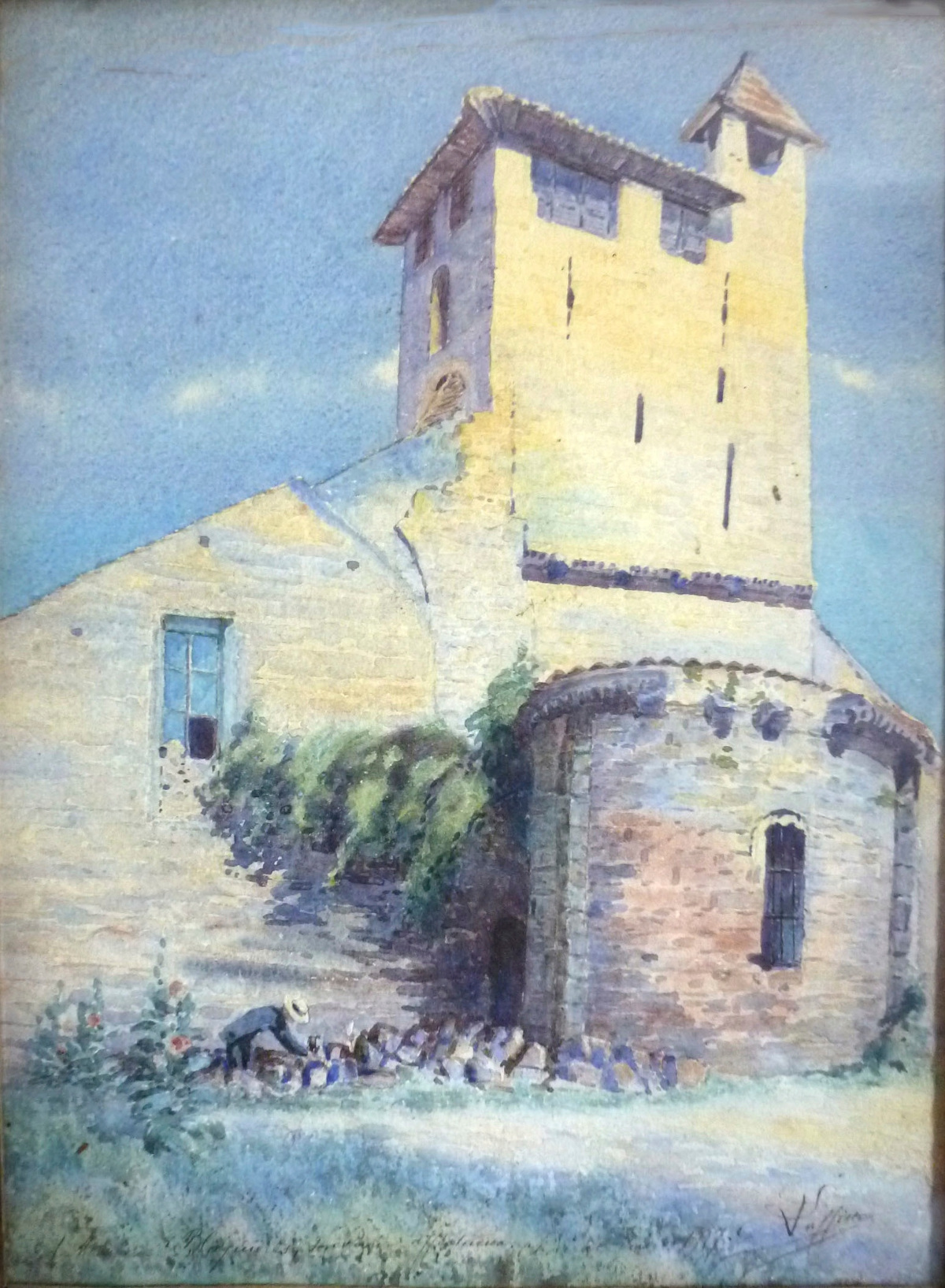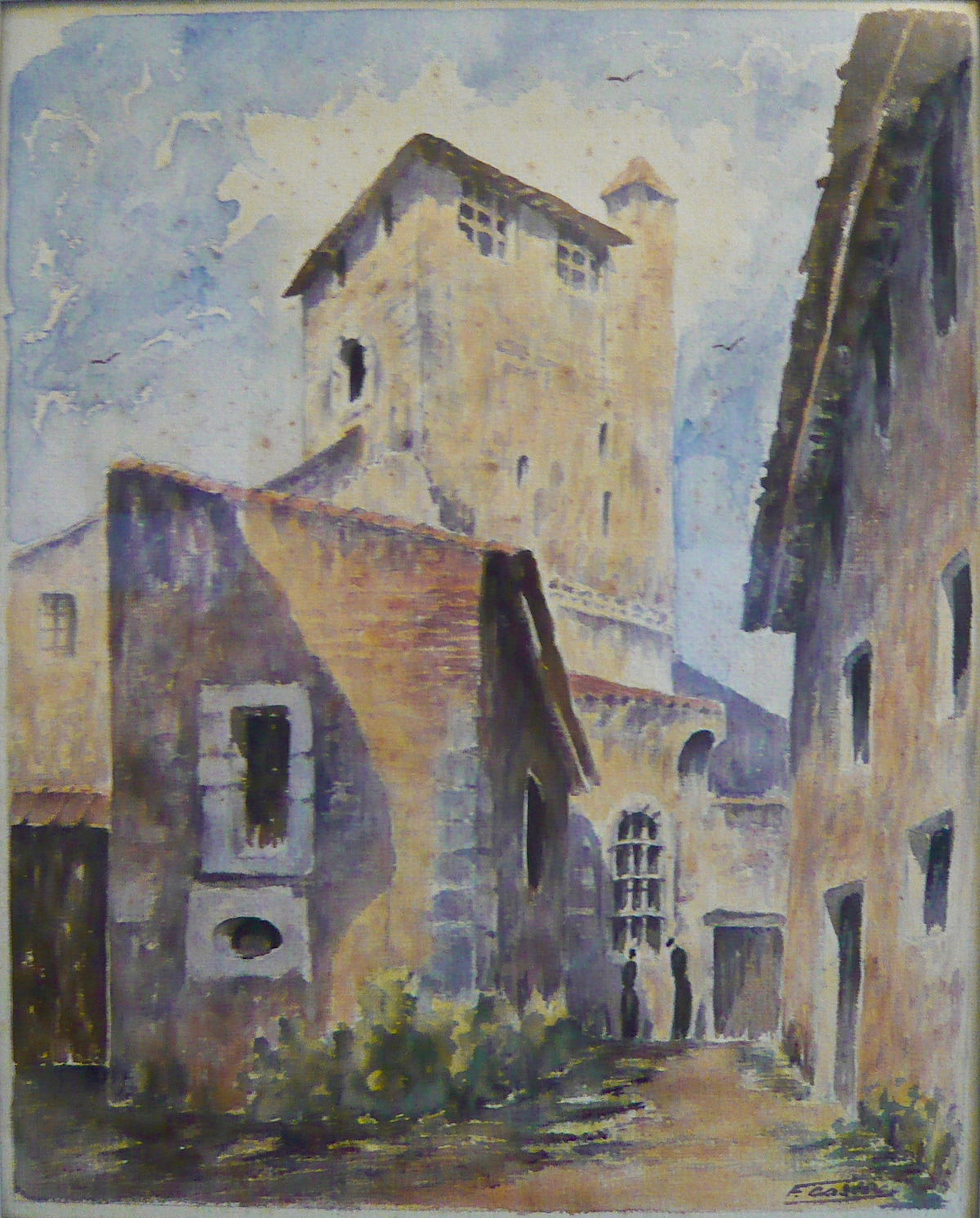

Half-timbered house, old warehouses, church tower, Romanesque apsidal chapel, back door form a setting that has also always inspired artists, as can be seen from the abundant painted or drawn production.The apsidiola, which still has several beautifully carved modillions, allows us – with imagination – to visualise the abbey church at the time of its splendour, when the central apse was in place of the warehouse that we see in the foreground, and another apsidiola to the south was symmetrical to the only survivor. One can imagine the scale of the ancient edifice by comparing the remains with the churches of Moirax and Mézin, as Alain Beschi did in his study “L'abbaye de Clairac: un vide documentaire, un gisement archéologique” (Clairac Abbey: a documentary void, an archaeological deposit) published in the proceedings of the colloquium Clairac et son abbaye, which was held in 2016.
But what a surprise to see that Charles Laffitte, upset the topography of the place… by making the warehouse, which is much older than the watercolour, disappear with a magic wand! In his place, he depicted a man wearing a canotier hat, digging through the old stones he had gathered.




For a long time, the dead end was known as the Benjamin Franklin dead end, in memory of the trip to Clairac the hero of American Independence made when he was the ambassador of his young nation in Paris. He came to visit one of his Clairacais friends who was by his side during the Revolutionary War.
Henri Maurousel is one of those atypical figures who give interest to a village like Clairac. His family was originally from Cambes. Son of Jacques Maurousel and Marguerite Hugon, he had one brother, Jean-Louis (died prematurely in 1929), sales representative for the Trussant company, in Sainte-Livrade ; a job that Henri took over after Jean-Louis' death. Henri was a house painter, but he indulged in "artistic" painting as an amateur; moreover, it was often postcards that served as a model, as here to represent Esclopière Street. In 1905, he married Alice Françoise Duchamps, a smoother by profession, and had two children: Jean (died in 1922), and Francine, wife of the teacher Pierre Tuminy. In the South-West, a smoother was a woman who ironed clothes.



